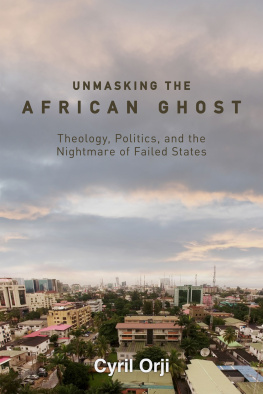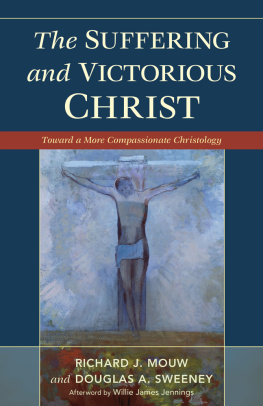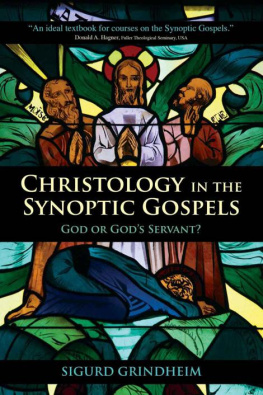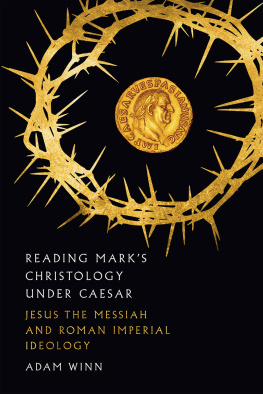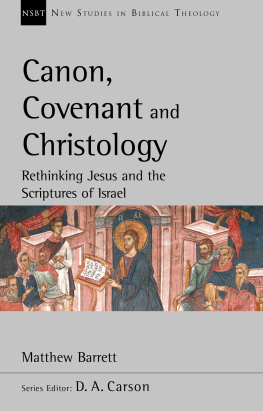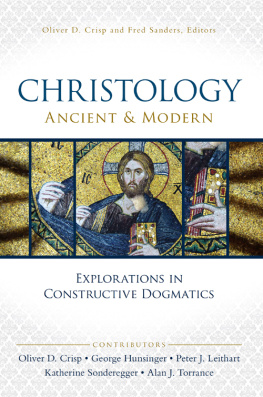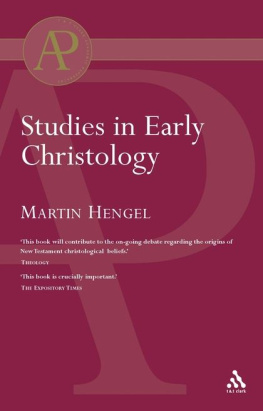Cyril Orji - A Semiotic Christology
Here you can read online Cyril Orji - A Semiotic Christology full text of the book (entire story) in english for free. Download pdf and epub, get meaning, cover and reviews about this ebook. City: Eugene, OR, year: 2021, publisher: Pickwick Publications (Wipf and Stock), genre: Religion. Description of the work, (preface) as well as reviews are available. Best literature library LitArk.com created for fans of good reading and offers a wide selection of genres:
Romance novel
Science fiction
Adventure
Detective
Science
History
Home and family
Prose
Art
Politics
Computer
Non-fiction
Religion
Business
Children
Humor
Choose a favorite category and find really read worthwhile books. Enjoy immersion in the world of imagination, feel the emotions of the characters or learn something new for yourself, make an fascinating discovery.

- Book:A Semiotic Christology
- Author:
- Publisher:Pickwick Publications (Wipf and Stock)
- Genre:
- Year:2021
- City:Eugene, OR
- Rating:3 / 5
- Favourites:Add to favourites
- Your mark:
- 60
- 1
- 2
- 3
- 4
- 5
A Semiotic Christology: summary, description and annotation
We offer to read an annotation, description, summary or preface (depends on what the author of the book "A Semiotic Christology" wrote himself). If you haven't found the necessary information about the book — write in the comments, we will try to find it.
Cyril Orji: author's other books
Who wrote A Semiotic Christology? Find out the surname, the name of the author of the book and a list of all author's works by series.
A Semiotic Christology — read online for free the complete book (whole text) full work
Below is the text of the book, divided by pages. System saving the place of the last page read, allows you to conveniently read the book "A Semiotic Christology" online for free, without having to search again every time where you left off. Put a bookmark, and you can go to the page where you finished reading at any time.
Font size:
Interval:
Bookmark:
Cyril Orji

A Semiotic Christology
Copyright 2021 Cyril Orji. All rights reserved. Except for brief quotations in critical publications or reviews, no part of this book may be reproduced in any manner without prior written permission from the publisher. Write: Permissions, Wipf and Stock Publishers, W. th Ave., Suite , Eugene, OR 97401 .
Pickwick Publications
An Imprint of Wipf and Stock Publishers
W. th Ave., Suite
Eugene, OR 97401
www.wipfandstock.com
paperback isbn: 978-1-7252-6917-0
hardcover isbn: 978-1-7252-6918-7
ebook isbn: 978-1-7252-6919-4
Cataloguing-in-Publication data:
Names: Orji, Cyril, author.
Title: A semiotic christology / by Cyril Orji.
Description: Eugene, OR : Pickwick Publications, 2021 | Includes bibliographical references and index(es).
Identifiers: ISBN 978-1-7252-6917-0 (paperback) | ISBN 978-1-7252-6918-7 (hardcover) | ISBN 978-1-7252-6919-4 (ebook)
Subjects: LCSH: Jesus ChristPerson and offices. | Semiotics.
Classification: LCC BT203 O75 2021 (print) | LCC BT203 (ebook)
03/09/21

Dedicated to
Clement and Olatokunbo Ojo
on the rd Anniversary of their Wedding
T his book is about an idea. Robert Doran wrote some time ago that an idea is the content of an insightan act of understandingand that some acts of understanding are exciting and many others, which are mundane go almost unnoticed. My sincere thanks to all who contributed directly or indirectly to the production of the idea of this book. I will forever be indebted to Steven C. Caton of the Department of Anthropology, Harvard University, for introducing me to the ideas of C.S. Peirce in a way that made lasting impressions on me. There is also Mark Morelli of Loyola Marymount University who always provides platform to test out my ideas at the West Coast Method Institute (WCMI), Los Angeles, CA. Some of the chapters in this book were presented and critiqued over the years at WCMI. I must thank the former Chair of the Department of Religious Studies at the University of Dayton, Daniel Speed Thompson, for his ever- ready willingness to support my research activities with travel fund. There are also many others without whom the idea of this book would not have come to fruition, particularly Robert M. Doran of Marquette University, John D. Dadosky of Regis College of the University of Toronto, and the Lonergan gurus at the Lonergan Center at Boston College Patrick Byrne, Frederick Lawrence, Kerry Cronin, and Susan Legere. You all demonstrate the functional collaboration to which Bernard Lonergan invites all. In the rat race thing we do in the academy, you will encounter some who embody the worst of the human spirit. But there are also those who embody the best of the human spirit. It is the latter who bring comfort and joy to the academy.
My greatest thanks goes to my Lord and Savior Jesus Christ who gives me strength and in whom I take refuge (See Cor : ). Bernard Lonergan could not have expressed divine providence better when he said, that God knows with equal infallibility, He wills with equal irresistibility, He effects with equal efficacy, both the necessary and the contingent. In other words, it is not enough to affirm divine omniscience and divine omnipotence without relating it to the human world.
I n one of his prison letters (April , 1944 ), Dietrich Bonhoeffer wrote that what bothers him incessantly is the question what Christianity really is, or indeed who Christ really is, for us today. Nineteenth century Roman Catholic theology, for example, attempted to meet a need, which was to respond to the challenges posed by modernity and the Enlightenment critiques of religion. It did this effectively under the cultural matrix of scholasticism. The ideas of St. Thomas Aquinas, particularly the philosophical system initiated by Joseph Marechal, known as Transcendental Thomism (a blend of Thomism and Kantian metaphysics), became the groartige Idee that helped Catholicism overcome these challenges. But what was at one time a solution can at another time become a problem (in the Thomas Kuhn sense).
Contemporary Christological discourse has for a while been stymied by the failure to move beyond Transcendental Thomism. In spite of its achievements, Transcendental Thomism is a product of the faculty psychology of the Aristotelian universe. Faculty psychology has obvious counter-positions. Faculty psychology is static and not attuned to new developments in science and semiotics. It does not heed the trend towards an evolutionary universe. Bernard Lonergan framed it best when he observed, using the example of a substance that has been pivotal in the development of civilizations and cultures throughout human history, firethat fire was conceived by Aristotle as an element, fire was conceived by Antoine Laurent Lavoisiers predecessors as a manifestation of phlogiston, and fire was conceived by later chemists as a type of oxidization. Although all these thinkers who lived across centuries had different conceptions of fire, it would be incorrect to say that Aristotle had an incorrect explanation of what fire is. That said, we must also admit that conceptions differ, depending on the scientific temper of each age. There is a difference between a descriptive and explanatory conception of a reality.
What I have been alluding to, precisely, is what this book is about that Christology is like a symphony. This symphony requires both description and explanatory hypotheses. Transcendental Thomism was a description. This book is, therefore, an attempt at an explanatory account of basic issues in Christology, employing a semiotic analysis. A semiotic model is consistent with the evolutionary worldview of contemporary science. This, by no means, disparages theologies constructed out of the old framework. It is rather a recognition that what the times demand is a new direction and that the nineteenth century solution (transcendental Thomism) is in need of a transposition, if we are to ensure that the science of Christology has a future.
The book has seven chapters. The chapters are organized thematically. Chapter explores some basic methodological issues in the study of Christology. The chapter addresses the transcendental Thomism conundrum. It argues that contemporary Christology needs to anchor its study, not on a metaphysics that lends itself to faculty psychology, but on a metaphysics of presence. If theology is to be a science, it needs a method that can accommodate all the revolutions in physics that have occurred from the sixteenth century onwards. These revolutions present us with conceptions of physical nature radically different from that entertained by classical physics. The complexity of the data and genres to be studied in Christology have made it imperative that contemporary Christology be attentive to the Saussurean distinction between diachronic and synchronic exegesis. The chapter contends that Christology should be as synchronic as it is diachronic and that a blend of the two axes is helpful for our understanding of who Jesus really is for us today. The chapter highlights faith as a sine qua non condition for understanding who Jesus is. Although non-believers can engage in Christology, their discourse is only a hypothetical discourse that is based on a contrary-to-fact condition. Since faith is what distinguishes theology from other disciplines, like sociology, psychology, and biology, the chapter contends that non-Christians who do not confess Jesus as Lord cannot meaningfully engage in Christology the way Christians do. This is because the intelligibility to be grasped in the science of Christ is not prescriptive, but derives rather from the invariant structure of consciousness of people with a legitimate (physical or spiritual) experience of the risen Christ.
Font size:
Interval:
Bookmark:
Similar books «A Semiotic Christology»
Look at similar books to A Semiotic Christology. We have selected literature similar in name and meaning in the hope of providing readers with more options to find new, interesting, not yet read works.
Discussion, reviews of the book A Semiotic Christology and just readers' own opinions. Leave your comments, write what you think about the work, its meaning or the main characters. Specify what exactly you liked and what you didn't like, and why you think so.

